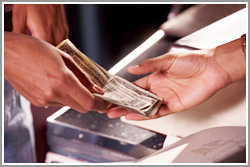Short Term Loans
Has it ever happened that you need money to solve emergency issues, and you wanted to return it right after?
Most personal loans have a long repayment period, however, worry not, we have come with a product for these exact situations - Short Term Loans.

ABC Cash Advance can help by lending you:
